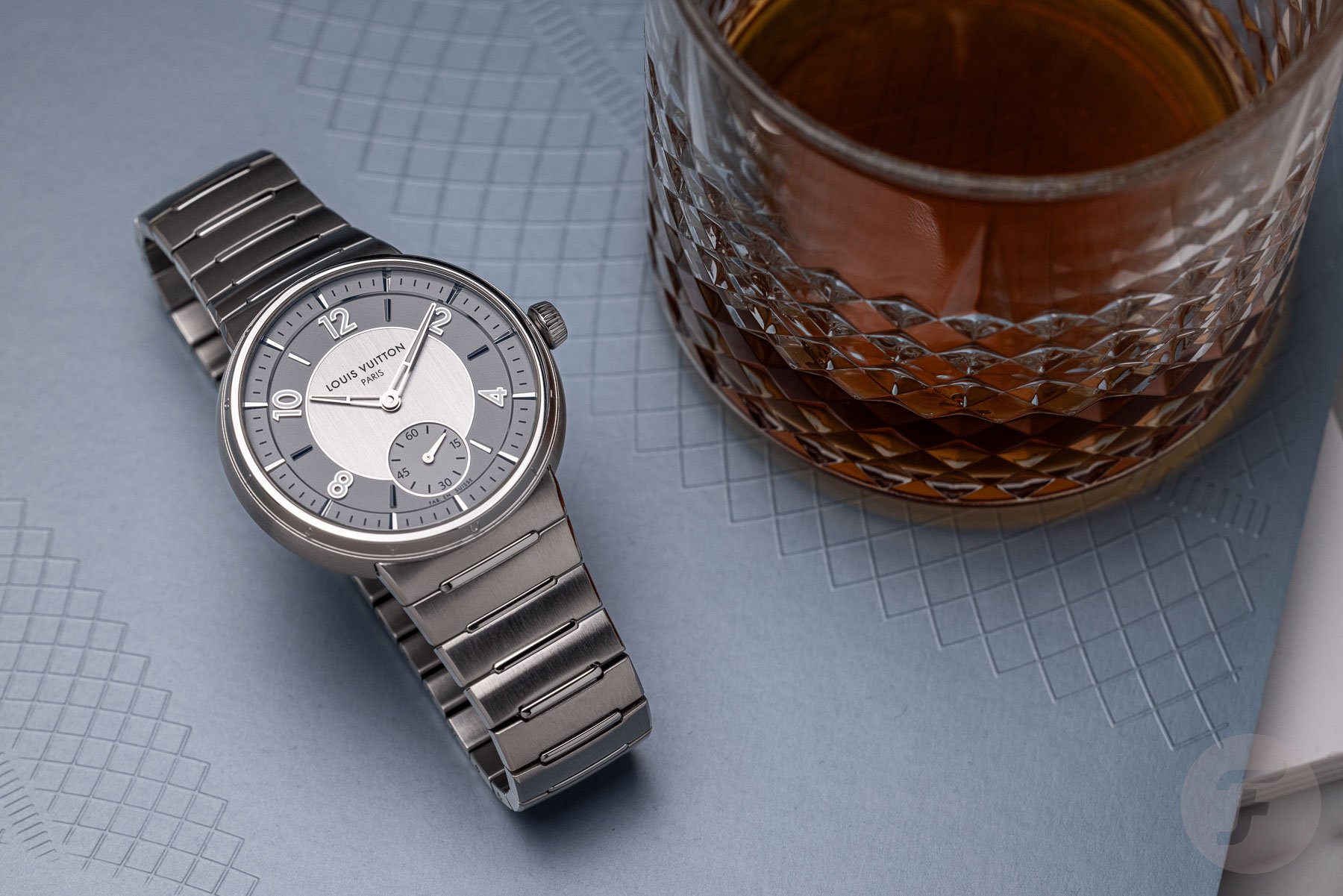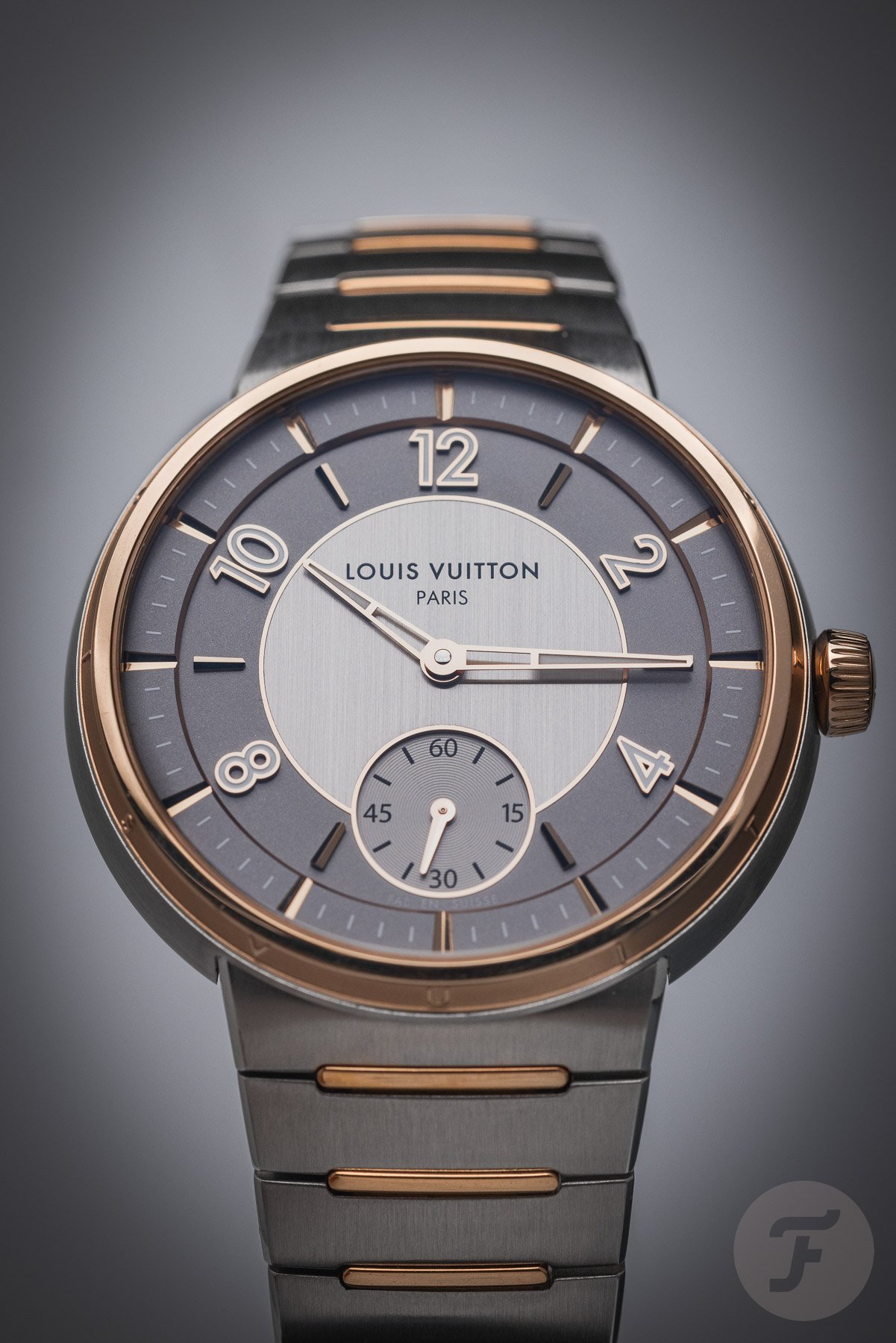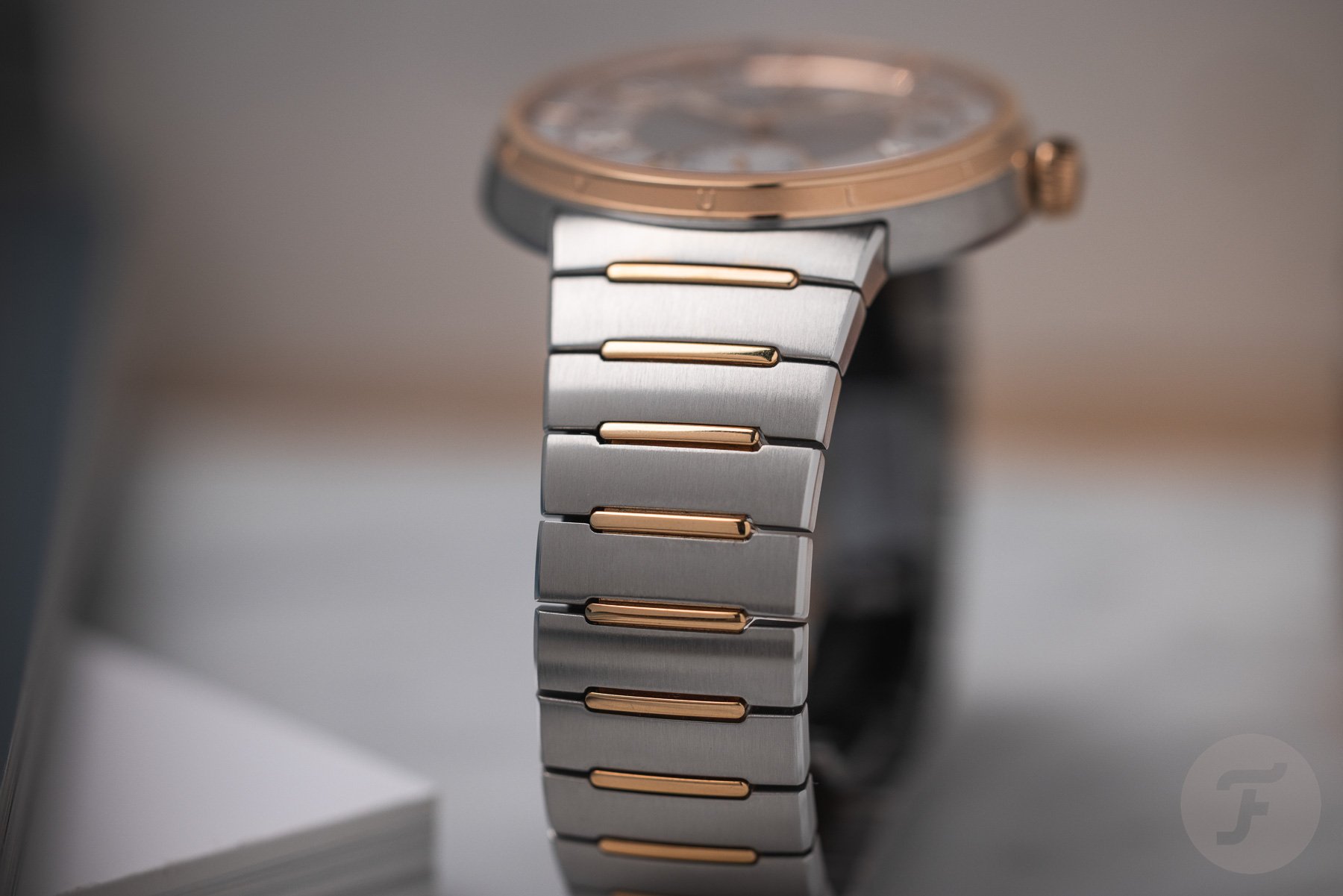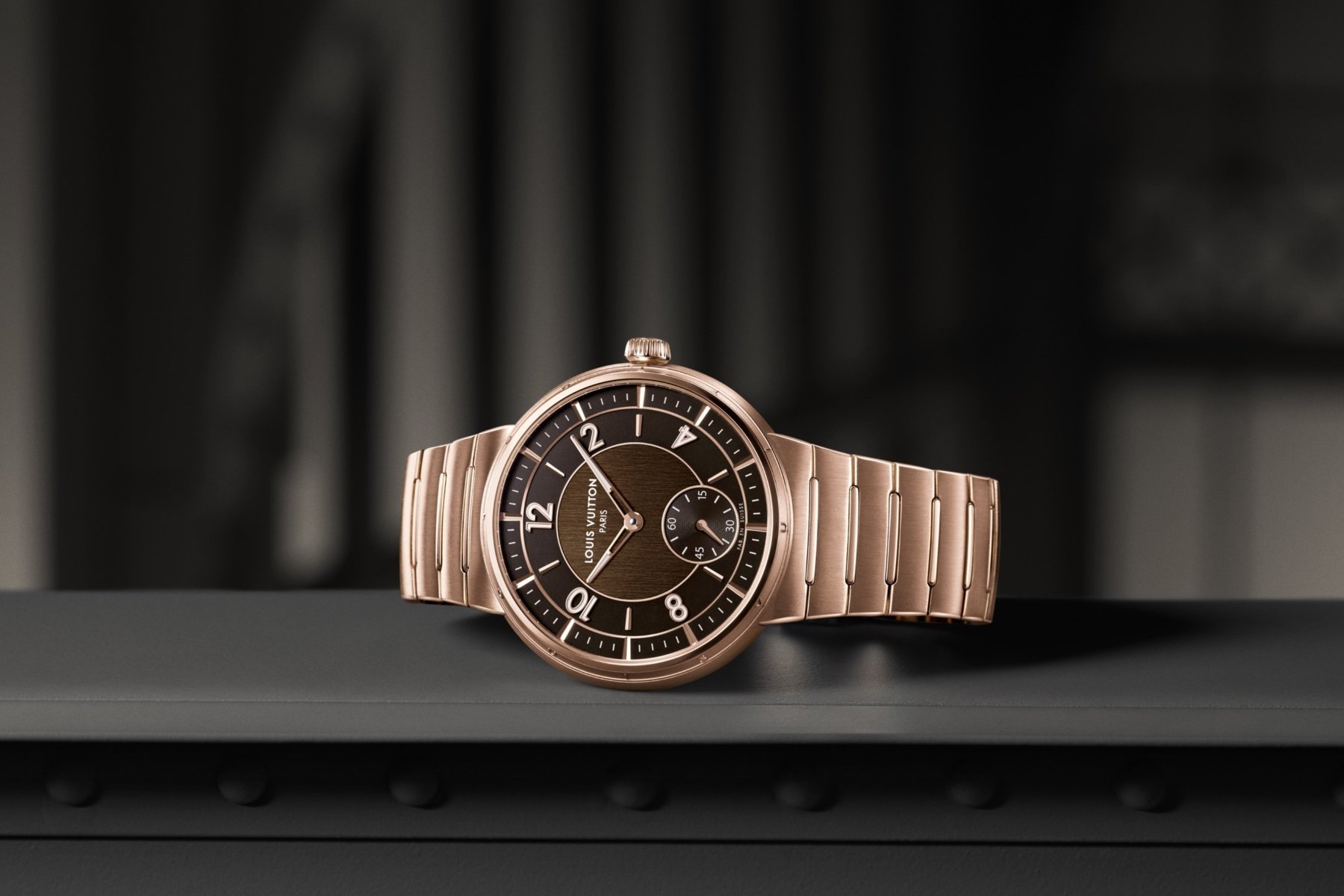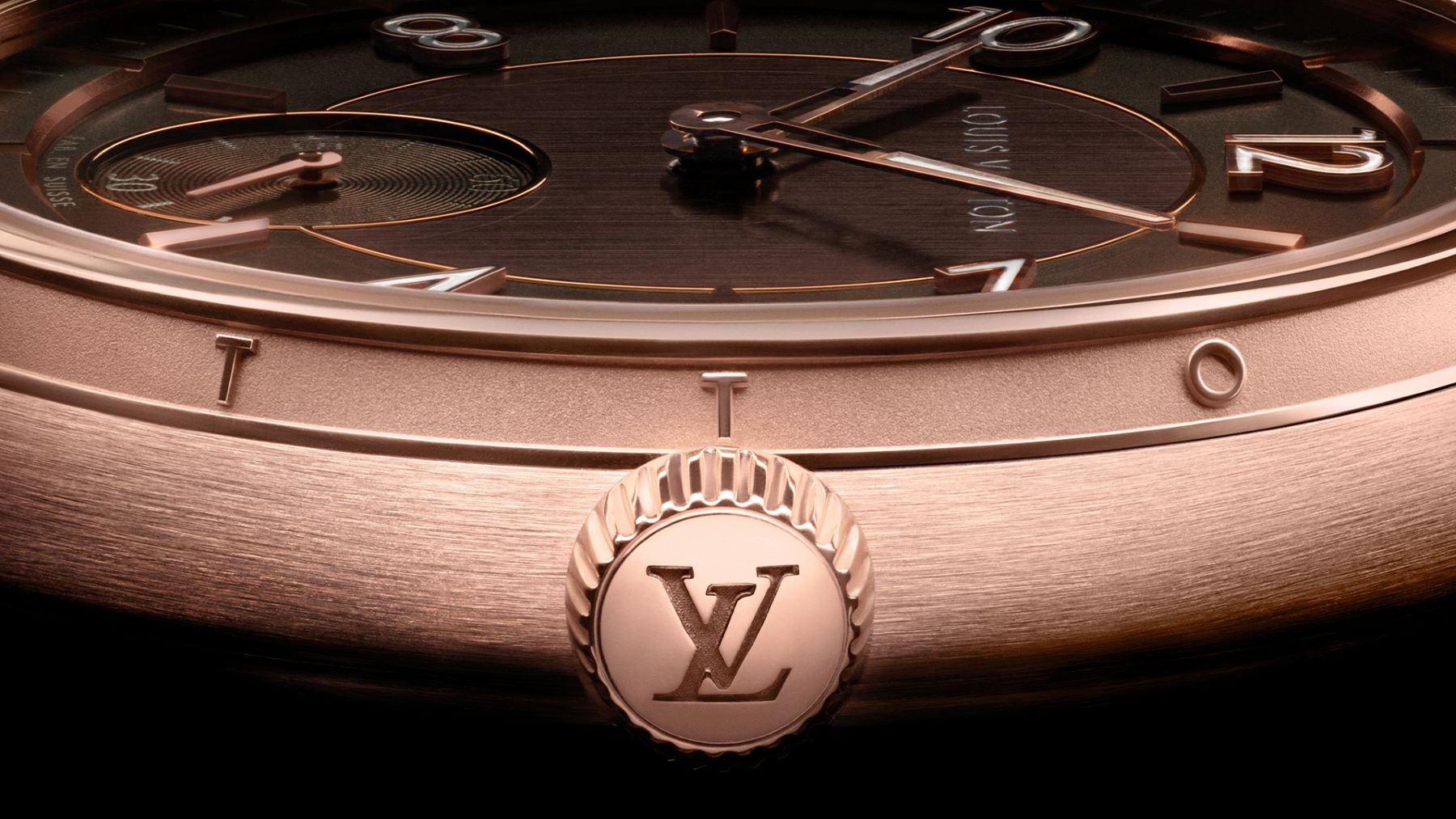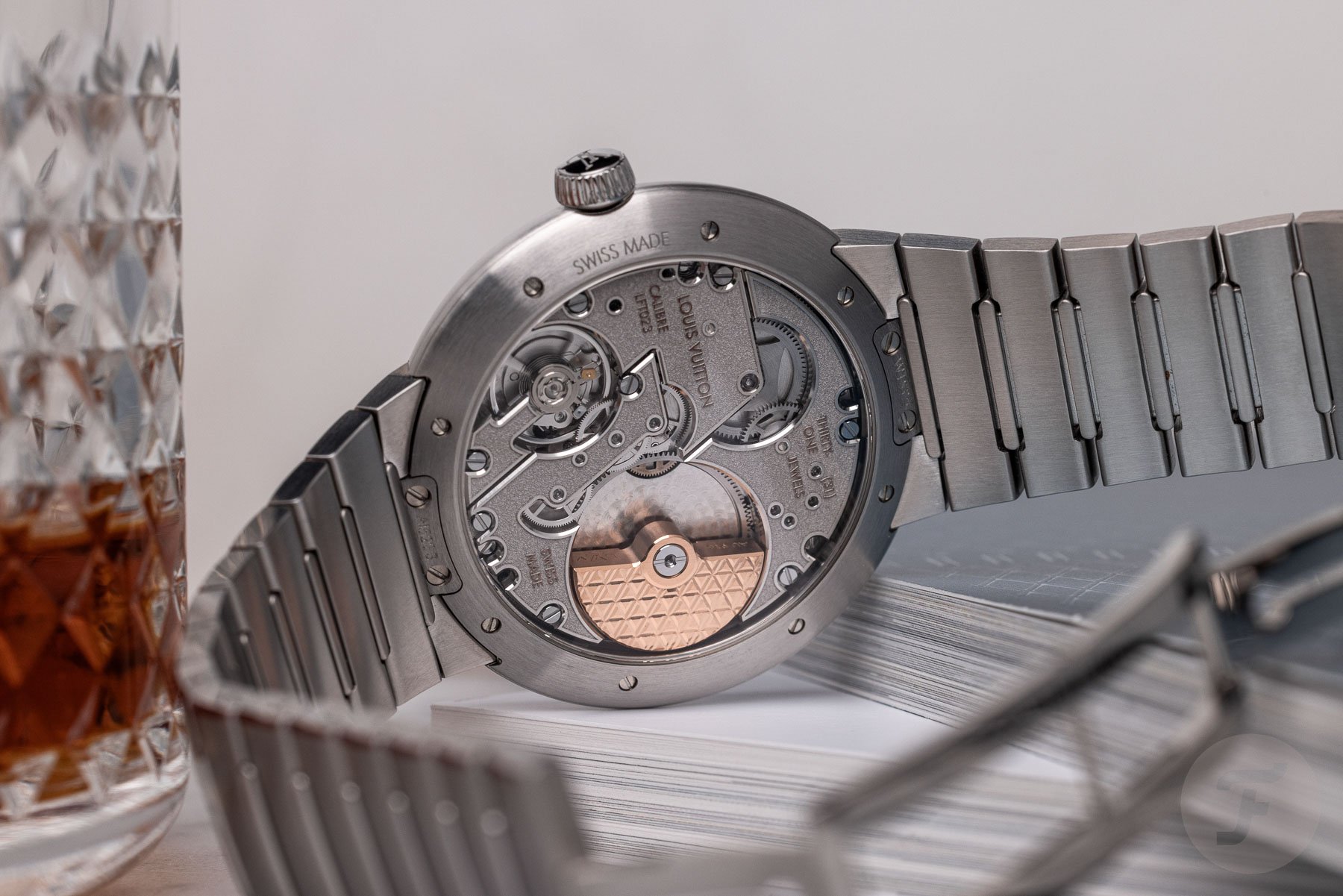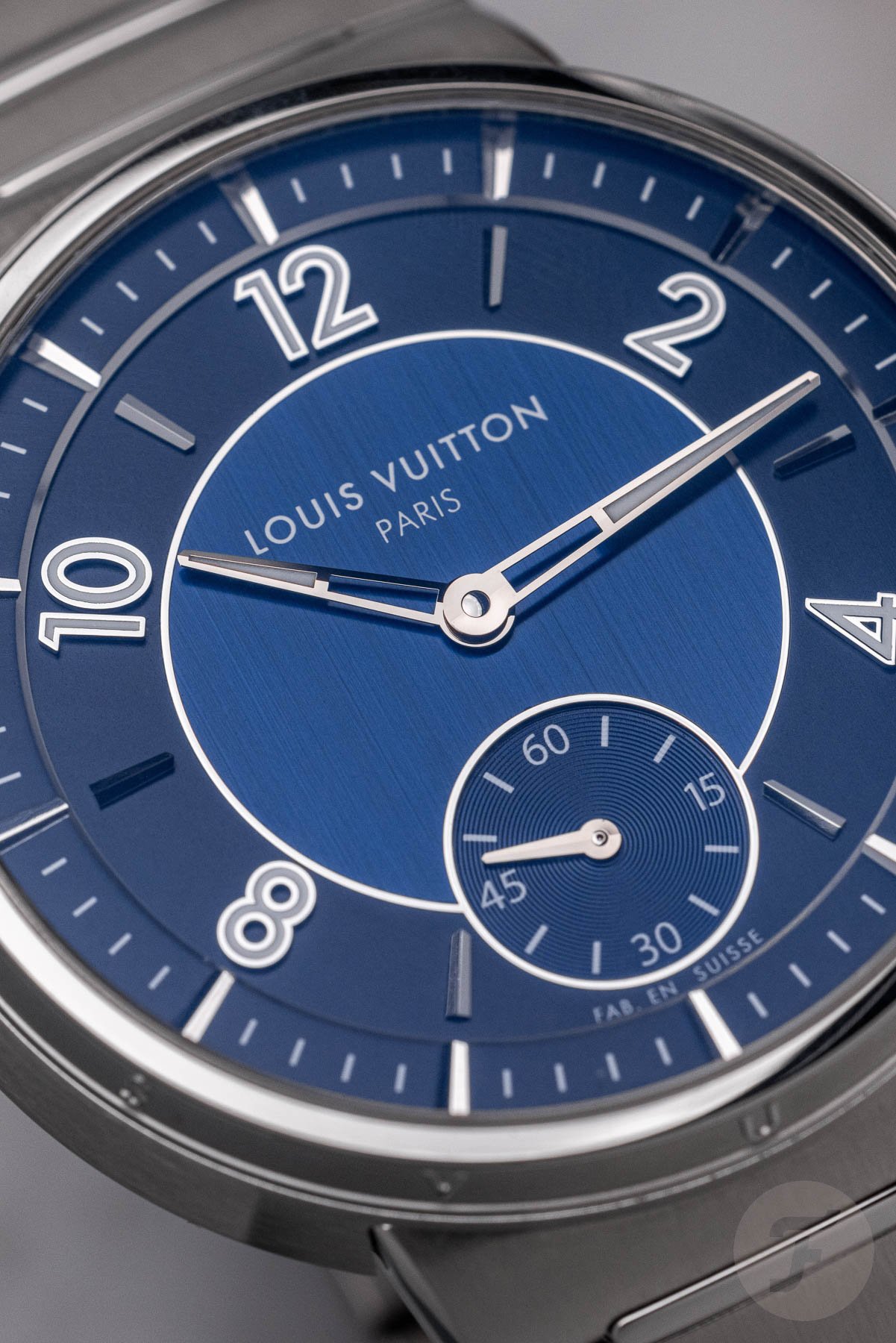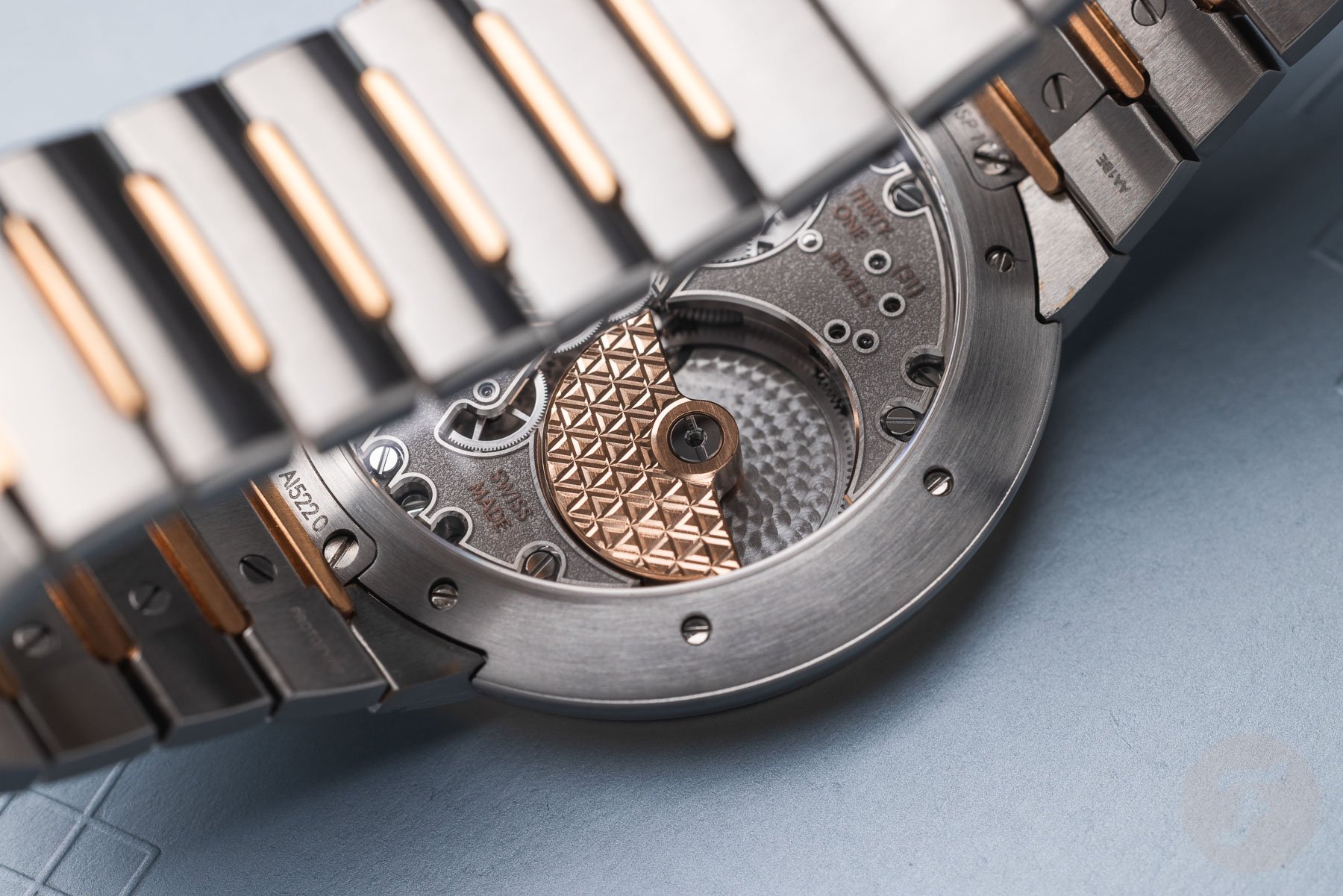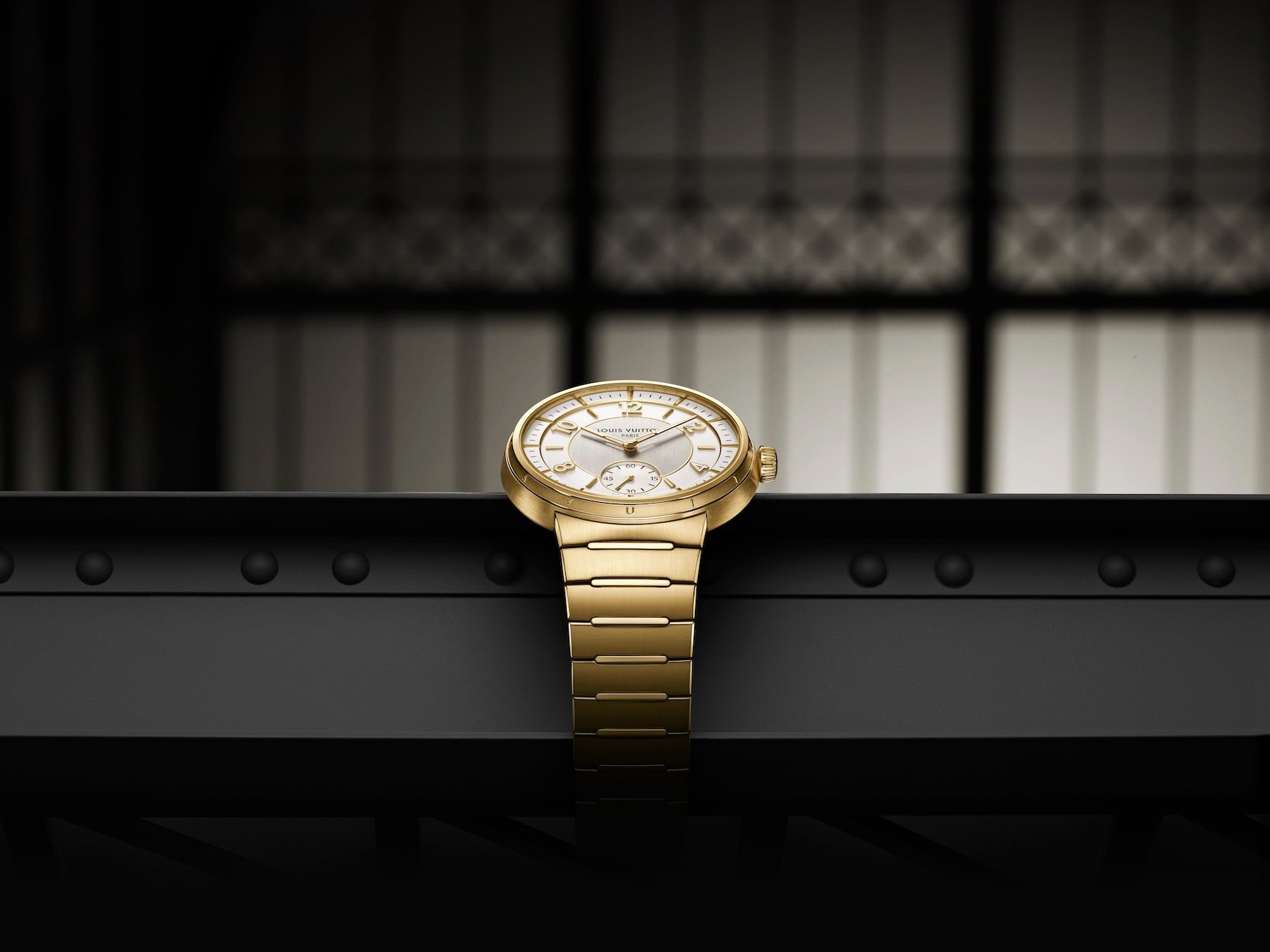The Louis Vuitton Tambour One Year On: Has The Infatuation Lingered?
This week, exactly one year has passed since the Louis Vuitton Tambour 40mm Automatic appeared in its new braceleted guise. With heavy hitters like the Polo ’79 having appeared this year, what are my thoughts on the Louis Vuitton Tambour one year on?
There’s no escaping from the fact that retro and integrated bracelets are big winners in the infatuation game. They’re number one on many people’s grail lists and the top style you’ll see flaunted on social media. But the tide seems to be turning towards more modern timepieces. With this in mind, the nouveau Tambour has held its own against the competition.
What does the new Louis Vuitton Tambour mean for the brand?
Besides exemplary pieces of Haute Horlogerie, like the menacing Carpe Diem from 2021, Louis Vuitton’s everyday watches have sometimes been seen as divisive. Sure, a select clientele has loved them, but the insiders of the watch world tend to be skeptical. But let’s face it: our beloved watch community doesn’t make up the majority of sales even if we believe ourselves to be the Tastemakers. To me, polarizing designs like the curvaceous drum shape of the Tambour are often the best. And unlike instant hits that fade quickly, they grow on you. So when Louis Vuitton launched the slim, sleek new Tambour last year, most of my colleagues and collector friends were surprised in a big, positive way. For me, the first impression was of sleek success and capturing the essence of the oft-cliched term “timeless.”
A hit of modernity on a retro-packed scene
The brand has grown exponentially with the young Jean Arnault at the helm as Director of the LV watch division. And the Tambour has a specific and curated design balance, making it stand out. This is undoubtedly a result of Arnault’s diverse background, with experience spanning MIT credentials to McLaren Racing. An impressive background before entering this new role at 23. Crucially, Jean appears to have an all-important finger on the taste pulse of the big-money Gen X and Z buyers. So, let’s unpack what this means for the Tambour. As a watchmaker, Louis Vuitton doesn’t have a rich ’60s or ’70s back catalog to pull from. This was a challenge because every last one of the most desirable grail watches today is an evolution or actual reissue of a vintage hit. In the world of cars, another market filled with status, this phenomenon is entirely alien. And this is why the new Tambour has been such a resounding, modern success.
The gray- and blue-dialed Tambour models emerged as two faces of contemporary design but with a style that transcends eras. The answer lies in recognizing the existing LV client base by riffing on a select set of design clues while catering to a new demographic with a new twist. It’s an Arnault magic trick that has worked. We all love integrated bracelets, and the sleek comfort of the Tambour’s steel version hit all the right notes. It has a just hint of ’80s flair, embracing the ends of the 8.3mm-slim case, entirely new in its 40mm diameter yet recognizable as a Tambour. Bringing out the second version as a two-tone design worked to accentuate the details while adding a warm contrast, especially with its grained and brushed vibrant gray dial.
The golden evolution
The choice of a 40mm diameter was also a wise one. Since the new Tambour isn’t a reborn decades-old icon like the Polo ’79, why cater to the trend of petite-cased vintage love? The contemporary mid-sized 40mm case underlines the clean design, which became even more obvious in the expected solid 18K yellow and rose gold versions. La Fabrique du Temps has set the bar pretty high. Louis Vuitton’s watchmaking production arm is shared only with the Daniel Roth and Gerald Genta brands. With retail prices starting at €20,900 and going up to €59,500 for solid gold, expectations will always be high, but to me, details like the Tambour’s stepped case didn’t disappoint. Have a closer look at how the case appears rounded but surpasses expectations.
It has a complex three-part finish starting with a circular-brushed base. The mid-bezel has a frosted finish, a distinct polish on the relief Louis Vuitton signature lettering, and a polished bevel on its protruding top rim. These details, along with the new movement introduced last year, made the Tambour appear on the lists of well-known collectors. And it was a well-deserved first for the brand.
Caliber LFT023, the beating heart of the Tambour, was another debut from Louis Vuitton and its first proprietary three-hand movement. It was developed by the Maison-owned La Fabrique du Temps in Geneva and manufactured by Le Cercle des Horlogers. The grainage-decorated caliber boasts a high-inertia 22K gold micro-rotor and efficient winding mechanism, providing a 50-hour power reserve and a 28,800vph (4Hz) beat rate.
What’s next for the Tambour range?
If I were to pick a favorite, I would struggle, but there is something about the warm tonality of the 18K rose gold version. While Louis Vuitton has picked a silvery-white dial for the yellow gold reference, to me, the chocolate tones of the mocha dial are a natural partner to rose gold. In certain lights, the dial emanates a two-tone effect from the vertically brushed dial center and matte outer hour-and-minute circles. This is even more obvious in the deep blue steel version. I also enjoy the prominent Arabic numerals’ crisp legibility, which, if you have the budget, helps make the steel version a great everyday sports watch. This is also an important part of the three-circle dial design, which solidifies the link with earlier and rounder-looking versions of the Tambour.
But what’s next for the range? Within the brand’s revamped line are the tough cousins from the Street Diver series and some more feminine references still exhibiting the previous Tambour’s design. At the moment, I feel that the brand’s confidence is well founded in the success of the newest Tambour; perhaps a natural progression will see a two- or three-register chronograph down the line. This will make the case a bit thicker, but with the proven success of the La Fabrique du Temps team, I’m confident this can be accomplished while maintaining a still-svelte 10–12mm thickness. But no matter my attempts at crystal ball gazing, the timeless charm of the Louis Vuitton Tambour is here to stay. Learn more about the five watches in the range on Louis Vuitton’s website.
What about you, Fratelli? Has the 40mm Tambour’s first year put it on your list of desirables? Let me know in the comments below.

